A little while back on the recipes thread Gabrielle asked for breakfast ideas that provided protein and worked around some allergies:
Breakfast has become a source of stress for me. Here is why. I have celiac disease so gluten and actually all grains are out for me (except a little white rice which is why this program appeals to me so much). I really need quality protein in the morning to feel good all day but since my diagnosis I over ate eggs and am now allergic to them as well. I have tried bacon and sausage but no matter how organic they are they just don’t sit well in my system. And, whey protein is out for me since I am also allergic to dairy (so just in case you were keeping score I am allergic to gluten, grains, eggs, and dairy).
So, does anyone know of any recipe that might work for me in the mornings?
I suggested chicken wings. These are easy to make in large batches, last a long time, can be eaten cold or microwaves, and make a great party or lunch box food.
It seems only fair to provide our recipe.
Preparing the Chicken
Chicken wings can be purchased either pre-cut or whole. We used to buy them whole, but cutting whole wings into drumettes, wingettes, and tips with kitchen shears tripled the amount of work, so now we buy pre-cut drumettes and wingettes.
After they’re cut, the next step is to rinse the drumettes and wingettes and strain the water, letting them drip-dry for 5 to 10 minutes until they are just moist enough to hold a rice flour coatingpat the wings dry with a paper towel and then let them air dry for ~20 minutes.
The next step is to coat them with a layer of starch, plus salt and pepper also if you haven’t already done that. We do this by putting ¼ cup (4 tablespoons, 60 ml) rice flour in a ZipLoc bag with 25 wing pieces and salt and pepper to taste. Shake the bag until the wing pieces are evenly coated.
Rice flour works better than tapioca starch or potato starch, as it is the least likely to stick to the cooking pan.
Spread the coated wing pieces on an aluminum foil covered cookie sheet:
If you used potato starch or tapioca starch, the aluminum foil will need to be greased with butter to prevent sticking.
Put the cookie sheet in an oven pre-heated to 400ºF (200ºC) for 20-25 minutes. At this point they should look like this:
Flip each wing piece over and return to the oven for another 20-25 minutes. At that point the chicken will be fully cooked:
UPDATE (February 2013): We’ve continued our experiments with chicken wing preparation and have come up with a few refinements:
- Using gluten-free flour composed of a mix of rice flour, potato starch, and tapioca starch works better than any single flour or starch.
- Because of concerns over aluminum contamination, we’ve experimented with other cooking surfaces. We’ve had excellent results with Pyrex baking dishes:
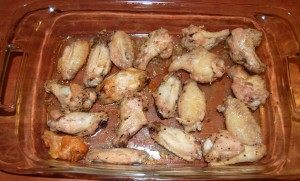
- In cases when the chicken wings seem not as fresh, we’ve taken the precaution of boiling the wings in water flavored with ginger-root and salt (both antimicrobial):
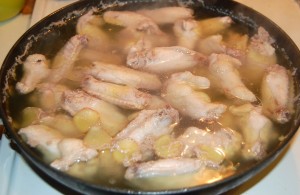
They can be boiled for 5 minutes and then transferred to a baking dish to resume the above recipe:
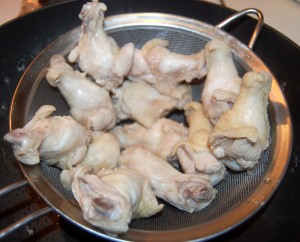
Or they can be boiled for 20 minutes and then pan-fried briefly with the sauce to brown them. This cuts the preparation time in half. This batch used a Chinese sauce (garlic, scallion, ginger, and soy sauce):
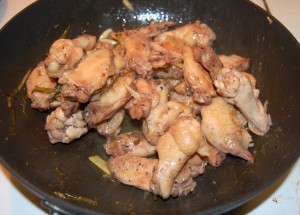
Dressings
We made several flavors:
- Garlic, parmesan, and mustard.
- Buffalo style.
- Pacific sweet and sour.
For garlic, parmesan and mustard wings, we mixed 2 cloves diced garlic, 3 tbsp butter, and 1 tbsp mustard at very low heat in a wok. Then we added 1 tbsp brown rice syrup, salt and pepper. When the chicken wing pieces were fully cooked, we added them to the wok, mixed everything thoroughly, and sprinkled parmesan cheese on top. They looked like:
For buffalo style, we combined 4 tbsp butter, chili powder and paprika to taste, garlic, salt, pepper, ¼ cup rice vinegar (or another vinegar), and 1 tbsp brown rice syrup. It looks like:
For Pacific sweet and sour sauce, see Pacific Sweet&Sour Salmon, Apr 10, 2011.
Conclusion
Chicken wings can be a bit time-consuming due to the 45 minutes of oven-cooking, but they are really easy. The chicken wings taste great and they make great finger-food and leftovers.
We typically prepare about 75 and eat them for dinner once and then for snacks over the course of the following week.







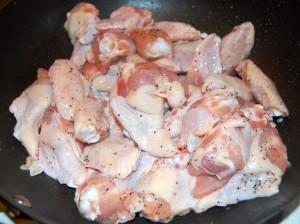
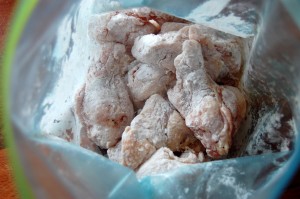
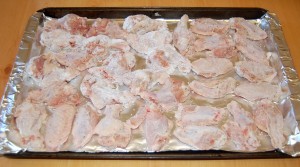
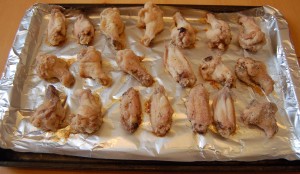
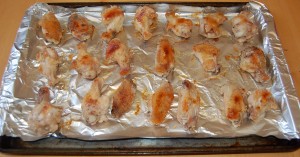
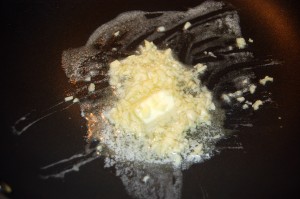
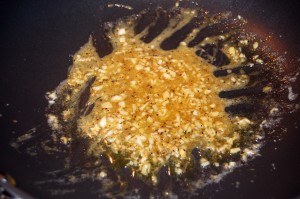
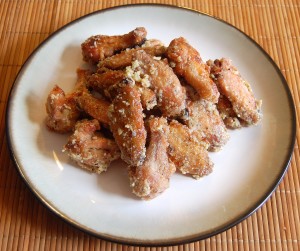
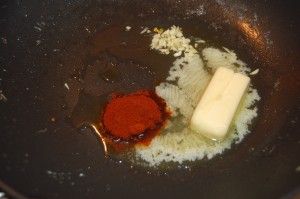
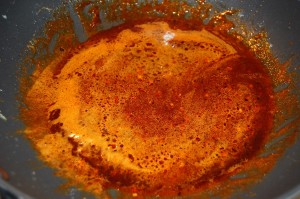
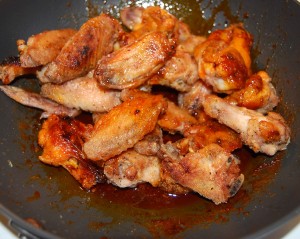
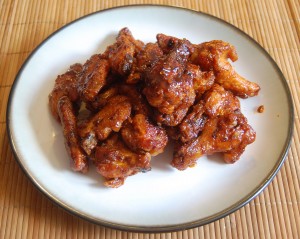
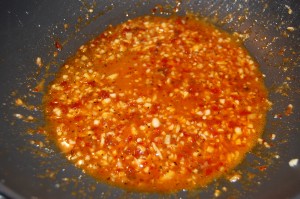
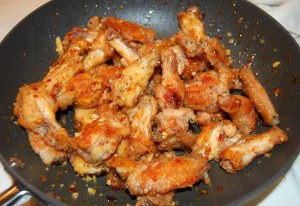





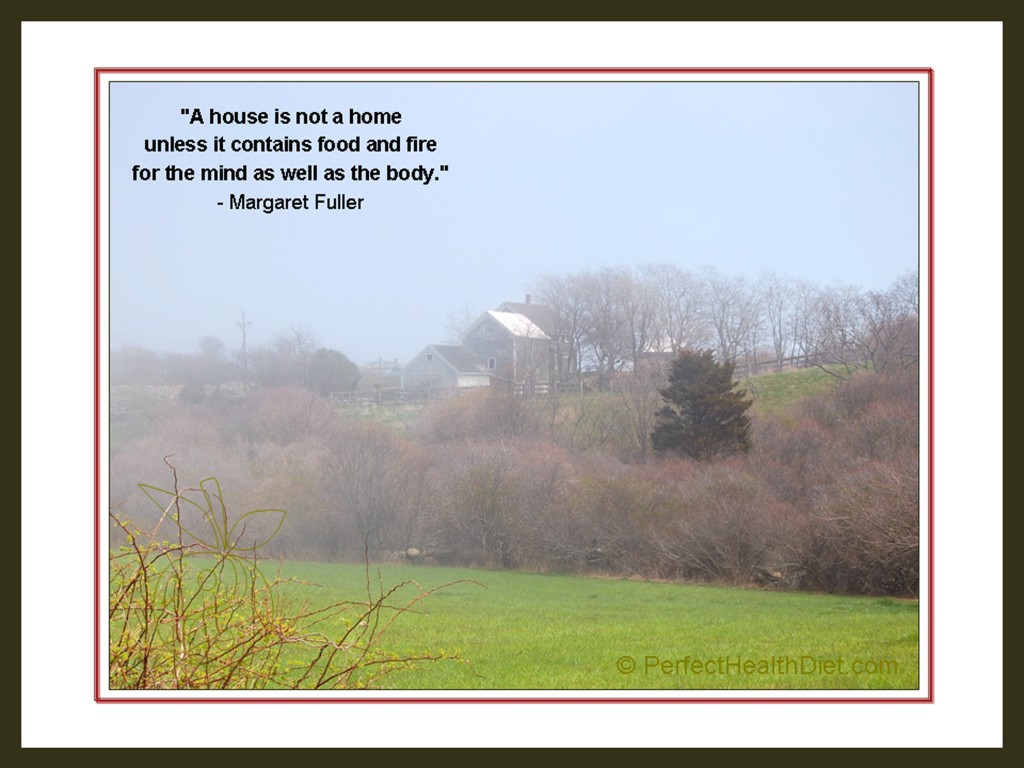
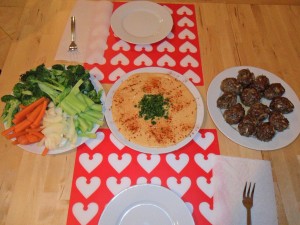
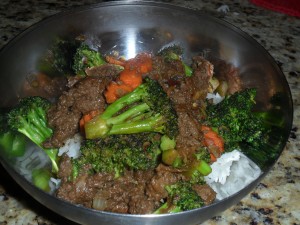
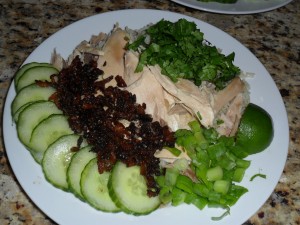
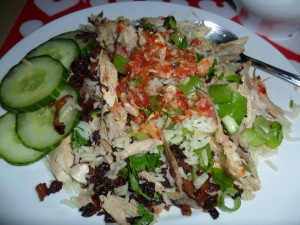
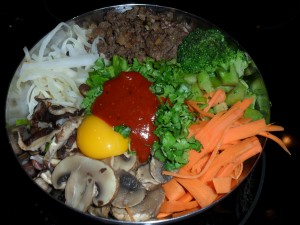
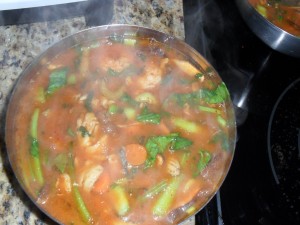
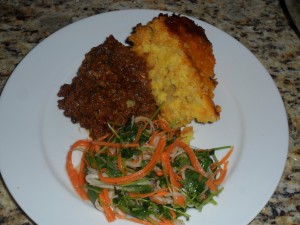
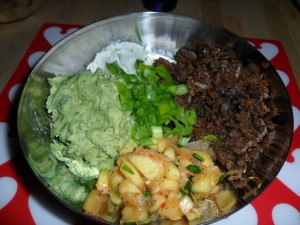
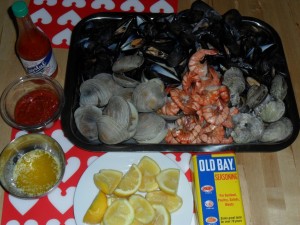
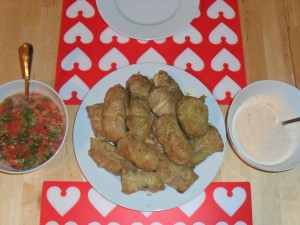
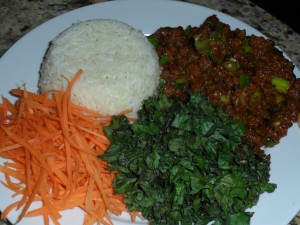
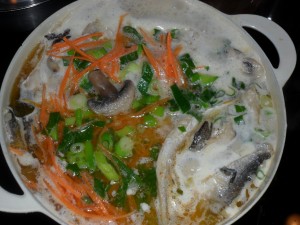
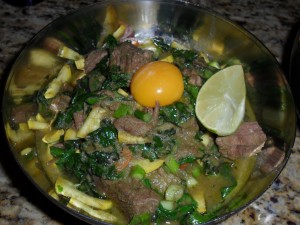
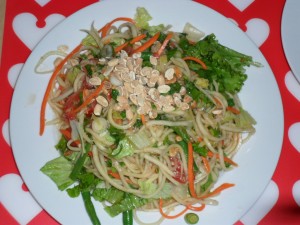
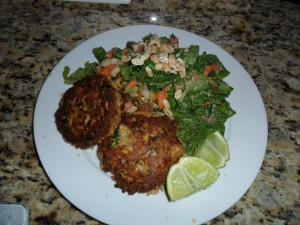
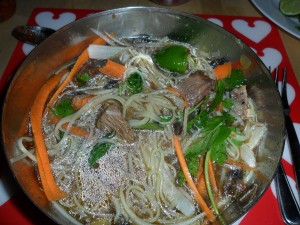
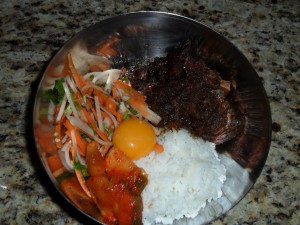
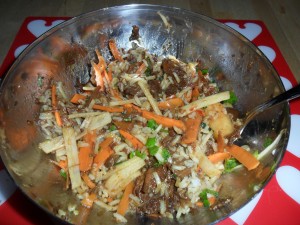
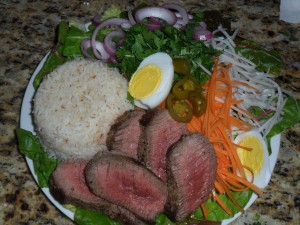




Recent Comments